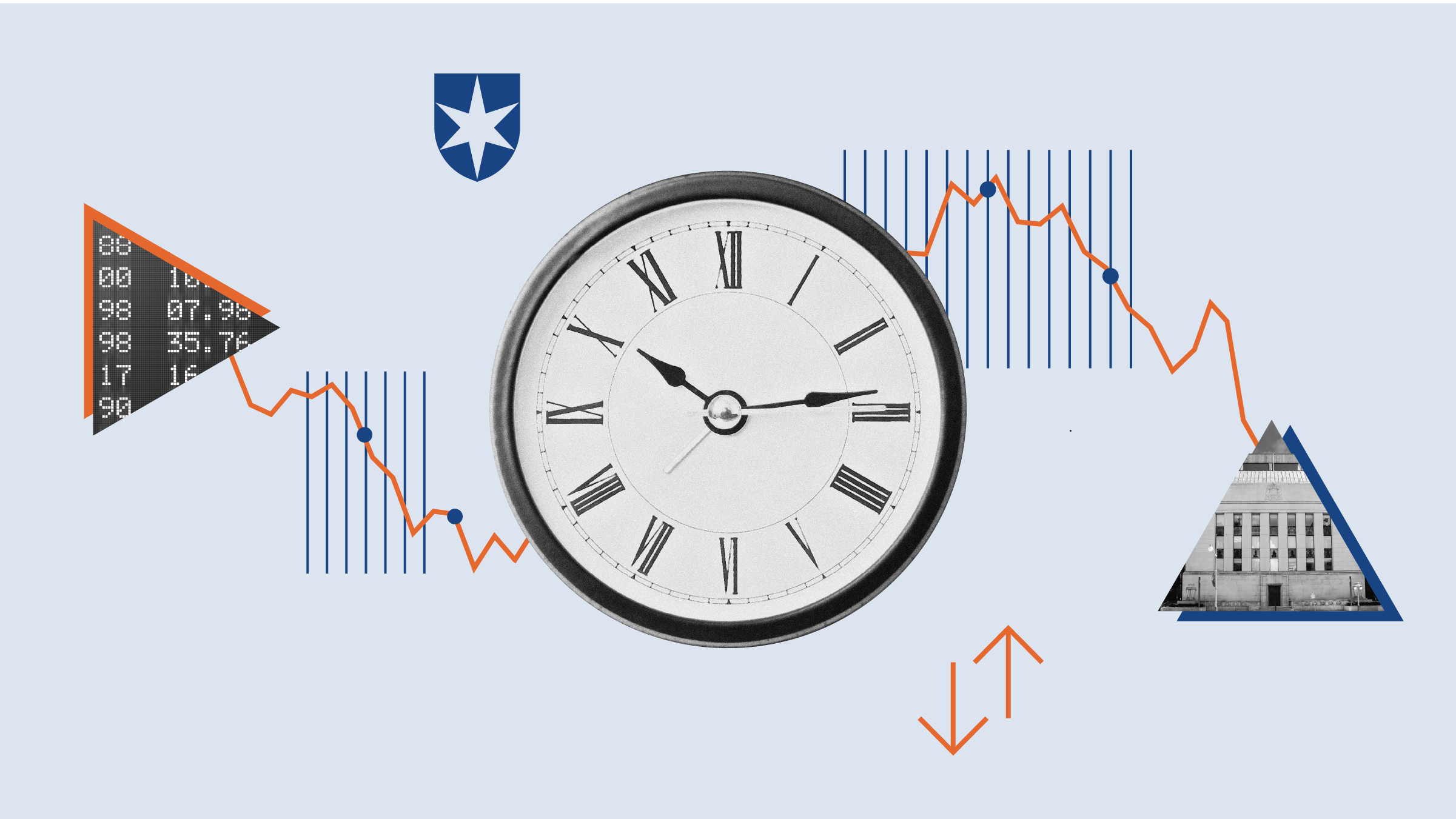
The Bank of Canada may be ramping up the pace of interest rate cuts amid concerns about the strength of the economy, but for investors, falling interest rates looks positive for Canadian stocks. The picture is muddier for bonds.
While stocks are seen as benefiting from lower rates and the Bank of Canada’s commitment to support growth, prices are rising for bond investors. This offers potential positive returns on bond funds, but yields are becoming less attractive from an income perspective. Those lower bond yields may also make dividend-paying stocks more enticing.
Wednesday’s cut marks the central bank’s fourth consecutive reduction this year, after it raised the policy rate to a peak of 5% last year. The Bank cut its overnight interest rate by half a percentage point, bringing it down to 3.75% from 4.25%. In its latest policy announcement, the Bank of Canada’s governing council pointed to mounting evidence that the Canadian economy and labor markets are weakening, perhaps by more than what is necessary to achieve the 2% inflation target.
Some market watchers are now pricing in a 50% chance of a similarly sized snip in December. The implication that the door is wide open for future cuts (at least for now) should provide the market some of the relief and policy visibility that investors value.
What Rate Cuts Mean for Stocks and Bonds
Amid falling rates, bond yields tend to decline. As yields drop, the income generated by bonds diminishes, pushing investors to look for alternatives.
With the ailing economy, frequent rate cuts, and falling bond yields, Canada’s monetary policy is on a different path than the United States, whose economy continues to improve, according to Dustin Reid, chief fixed-income strategist at Mackenzie Investments. “The Bank of Canada’s [rate cut] actions – and likely further actions – could create an opportunity for Canadian fixed income to outperform US fixed income in the months ahead,” he says.
Sadiq Adatia, chief investment officer at BMO Global Asset Management, says lower interest rates “allow equities to stay stable even if revenues start to decline, since multiples can stay higher.”
Dividend Stocks May Look More Attractive
Divided-paying stocks become more appealing in such scenarios, as they offer the potential for regular income and capital appreciation.
There is roughly a quarter of a trillion dollars sitting in excess term deposits and money-market funds, according to a CIBC equity research note. It adds that Wednesday’s jumbo cut pushed yields on three-month government bills below 3.6% for the first time since October 2022.
“A third of these excess term deposits are set to expire within the next two quarters [and] combined with the excess assets sitting in money market funds, this could unleash over $100 billion in liquidity into dividend paying equities by the middle of 2025,” says the note.
Which Stocks Will Benefit from Falling Rates?
Lower rates are particularly favorable to sectors that are sensitive to declining borrowing costs, such as financials, real estate, and high-dividend paying utilities--key constituents of the Canadian economy.
“Survey and anecdotal data suggest this 50-basis-point cut was a key element for some prospective home buyers to come back into the market, so housing and related industries are likely to get a boost from Wednesday’s announcement, as well as the suggestion more cuts are in the pipeline,” explains Reid.
Adatia believes anything tied to consumer spending (staples and discretionary) should eventually benefit, adding that strong consumer will take some time. In the near term, though, some of the benefits of lower interest rates could be dampened by the uncertainty surrounding jobs and the broader economic outlook.
Rate cuts take time to flow through the economy, says Royal Bank of Canada economist Claire Fan in her post-cut commentary, which suggests the central bank needs to make more aggressive cuts. “Even with interest rates moving lower, many borrowers can continue to expect debt payments to go up in the years ahead,” she says. “That speaks to more urgency to ‘front-load’ the easing.”
However, any acceleration in easing monetary policy could have significant implications for the currency market. For instance, the faster pace of cuts tends to drag down the Canadian dollar relative to its US counterpart.
“If there is a widening in US-Canada policy rates, the Canadian dollar could also see further declines,” says Reid, who adds that “continued equity market all-time-highs would likely mitigate a material Canadian dollar selloff.”
The author or authors do not own shares in any securities mentioned in this article. Find out about Morningstar's editorial policies.















